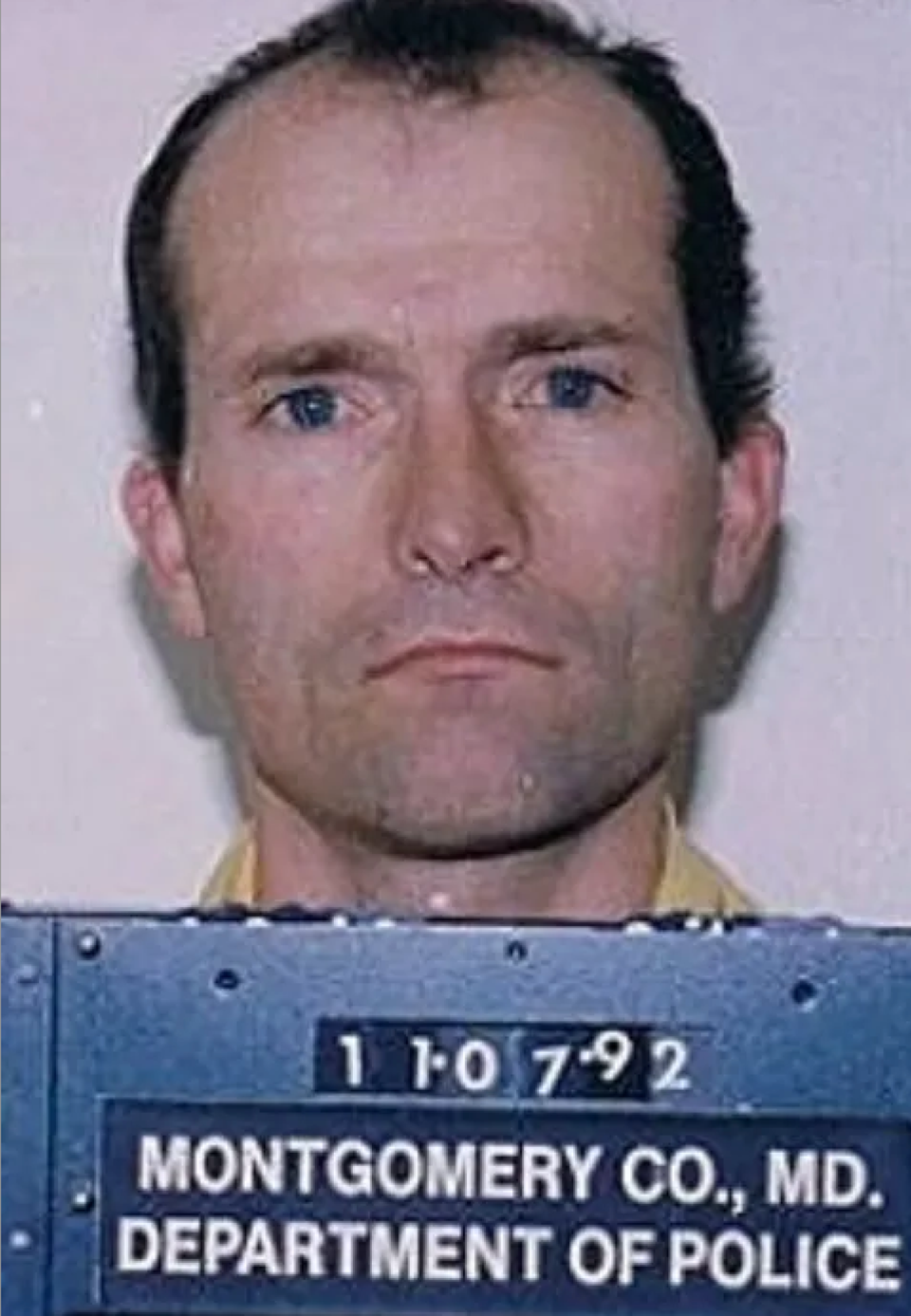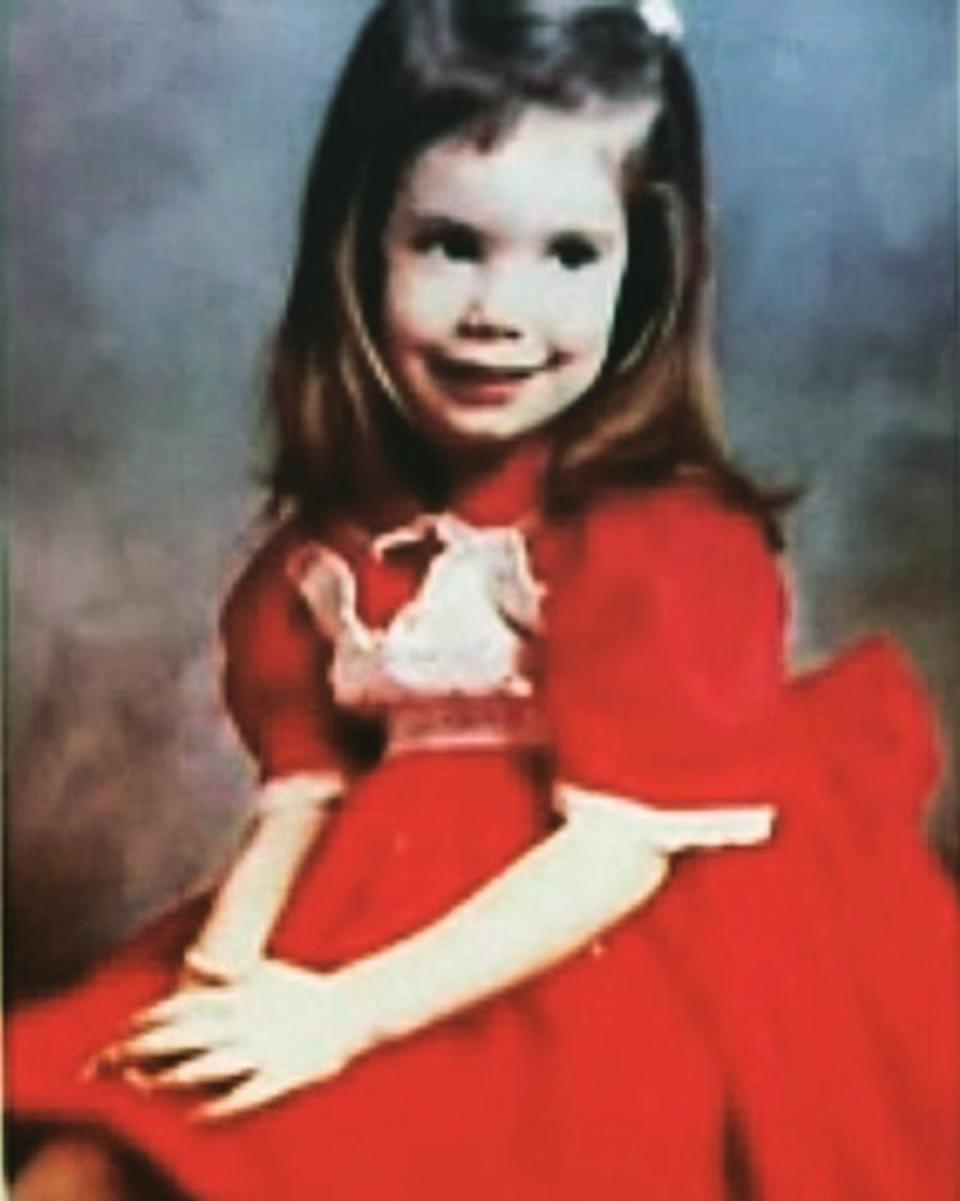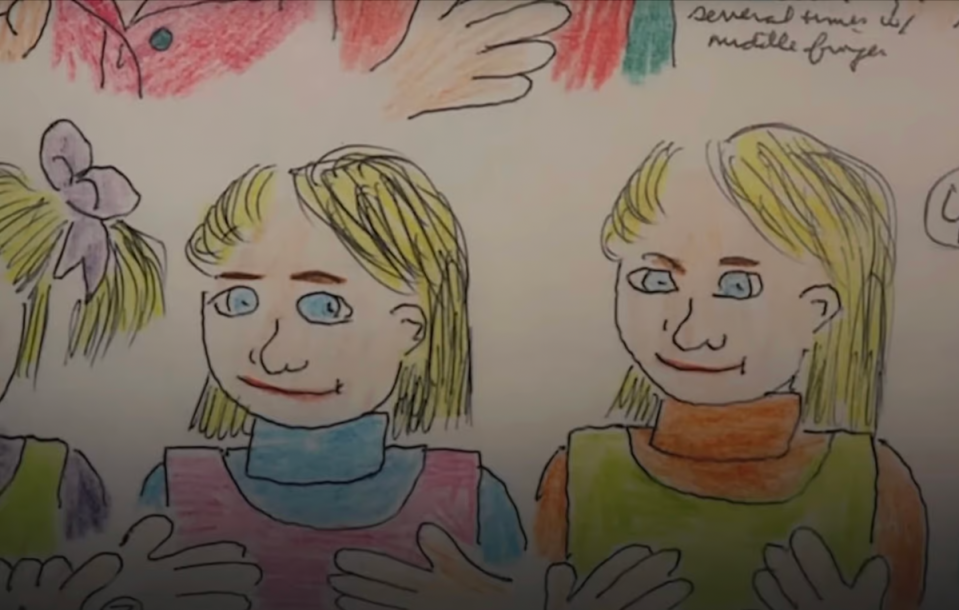Hadden Clark was serving a prison sentence for murder when he confessed his sins to his cellmate, a long-haired, bearded man he believed was Jesus.
Cellmate Jack Truitt listened to Clark’s detailed description of how he slit the throat of a young girl in a pink bathing suit, drank her blood and ate some of her flesh before burying her in the woods.
He admitted to Truitt that he knew where he had left the body of six-year-old Michele Dorr and led police to her remains in 2000.
Investigation Discovery’s new docuseries, Born Evil: The Serial Killer and the Saviornow streaming on HBO Max, delves into Clark’s tangled past, his unspeakable crimes, and his shocking confessions.
Clark is a serial killer whose name you may not recognize. But his sinister crimes are just as heinous as those of Ted Bundy or Jeffrey Dahmer.

Over the years he has confessed to killing several people, but only two victims have been confirmed.
Clark killed Michele on May 31, 1986. Years later, on October 18, 1992, he murdered 23-year-old Harvard graduate Laura Houghteling.
But it took years for Clark, a diagnosed paranoid schizophrenic, to confess.
Instead, he sent a condolence card to Laura’s family, for whom he worked as a gardener. When he was eventually caught and questioned, he insisted that his alter ego, a persona he calls Kristin Bluefin, was responsible for the murders.
The series also explores Clark’s depraved childhood – how he claimed his mother forced him to wear girls’ clothes as punishment, how his father murdered a man, and Clark’s hobby of killing and dissecting animals. As an adult, he attended the Culinary Institute of America and was caught drinking cow’s blood.
It was just the beginning.
The Murder of Laura Houghteling
When Laura Houghteling’s coworkers told her she hadn’t shown up for work, her brother noticed that their family’s gardener, Clark, hadn’t wanted to make conversation all day.
He told the police, who quickly took Clark in for questioning. But Clark gave an alibi for the night she disappeared and burst into tears.
A few days later, he sent a chilling condolence card to Laura’s brother and her mother Penny, the local magazine reported The Washingtonian from 1994.
“Please call me when you’re ready to garden again,” Clark wrote on the card. “And I can also bring you bagels on Fridays,” he added, referring to his job at a local bagel shop.


Clark was later identified as a suspect after police found a bloody fingerprint on Laura’s pillowcase found in the woods.
He strangled her with a pillow in her bedroom, stabbed her and later cut off one of her earlobes so he could throw away her earring, police said.
In court he admitted to strangling Laura while wearing a wig and Penny’s clothes at the time of the murder.
Clark pleaded guilty to second-degree murder and was sentenced to 30 years in prison.
While in prison for Laura’s death, he began confessing to his cellmate about Michele.
The murder of 6-year-old Michele Dorr
Michele Dorr was only six years old when she disappeared from her backyard on May 31, 1986.
She was wearing a pink and white polka-dotted swimsuit and was last seen walking toward an inflatable pool, her father said.
Clark was living with his brother in Silver Spring at the time, just two houses down from where Michele lived with her father.


But Michele wasn’t found until 2000, after Clark’s confession to Truitt. Her shallow grave was found in a nearby park.
Clark had slit her throat with a knife before drinking some of her blood and eating a chunk of her flesh. She was still wearing her pink bathing suit.
‘Soulless individual’ who attributed his actions to his female alter ego
In the late 1990s, now-retired FBI agent Lou Luciano began interrogating Clark at length at the Western Correctional Institute.
Luciano addressed the interviews in the docuseries, in which he described Clark as “pure evil.”
“You’re dealing with multiple personalities, a guy eating moldy pork burgers,” Luciano said Rolling Stone.
“He’s a killer. He’s a soulless individual. There’s nothing behind those eyes. And he was the one holding the cards, because he had a pretty good idea where the bodies were.”
Luciano said that when they interviewed him, it became clear that Clark had “multiple personalities” — and Kristen Bluefin was one of them.
Clark maintained that Kristen was responsible for the murders.


He signed his name as Kristen and claimed she was a “mean bitch,” ate “raw” meat and liked “to hide things.”
“When Hadden started showing that his most powerful personality and most productive personality was this woman, he started to become her more in the moment. He would move back and forth… I think Kristen was probably his wall, his shield.”
The killer also made chilling drawings that contained clues to his alleged crimes.
“His drawings are usually women and landscapes, maps,” Luciano said. “They’re almost like postcards, like, ‘If only you were here, I could kill you.’ I’m in them sometimes… But they’re always girls with big eyes and blue eyes.”
The drawings bear an eerie resemblance to those of BTK killer Dennis Rader.
During one of the interviews, Luciano asked Clark for a photo of Kristen and he gave him a drawing of a blonde woman with big blue eyes.
It looked like FBI Special Agent Desiree Smith, Luciano noted. When they brought her in to help, Clark smiled and said, “You’re Kristen.”
The researchers were then able to get more information from Clark.
The Confession
In 2000, with Truitt’s help, police were able to narrow down the investigation and give the families some clarity.
Truitt recounted his wild encounters with Clark in the docuseries.
He remembered the rancid smell coming from the killer’s cell. In Clark’s locker he had kept 15 cartons of milk.
“He would save them. It’s hot. He would just swell them up. It was just gross, man,” Truitt said. “I told him, ‘Why would you do that?'”
And he told me, “It reminds me of decomposing bodies.”
Luciano credited Truitt for helping investigators process the facts about Michele’s family.
“When Hadden started confessing to Jack that he thought he was Jesus, Jack said, ‘Man, this guy is talking about killing, dilating, cannibalizing little children and slitting women’s throats,’” Luciano said.
“Jack did this at great risk…being locked up in a correctional facility. Calling the police can make a very bad entry in your medical record while you’re locked up. But Jack picked up the phone and called that.”
Cannibalistic brothers
Over the course of the series, Clark’s brother, Geoff Clark, opens up about their childhood and the dysfunctional aspects of their upbringing.
Sometimes he cries for his brother’s crimes.
A third Clark brother is also a convicted murderer. Bradfield Clark, now 73, was convicted in 1985 of murdering and dismembering a female co-worker in California, allegedly eating parts of her corpse.
In the docuseries, investigators note how rare it is for two brothers to be involved in completely different murders at the same time.
Their younger brother condemns his siblings in the docuseries and describes the grief he feels for the families of their victims.
Clark claims he first learned about murders when he saw his late father kill a woman.
A murderer eligible for parole
Warden Michael Bay said he spent countless hours talking to the prison in Clark to gain insight into the mind and psychology of an individual described by the FBI as a “person of interest” in more than 20 states.
It is unknown if Clark has claimed any additional victims, but Bay hopes his series will provide answers.
“’Born Evil’ could potentially open the door to solving a lot of old murder cases,” Bay said.
Clark is currently serving two consecutive 30-year sentences at the Eastern Correctional Institution in Westover, Maryland.
However, the serial killer is now eligible for early release.
“If you’re okay with this man living in your basement or renting a room from you, let him go on probation,” Luciano said.
All five episodes of Born Evil: The Serial Killer and the Savior are now streaming on Max.